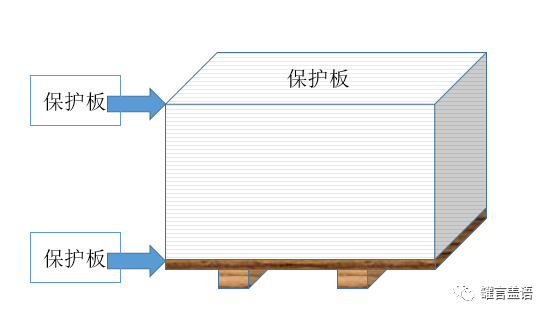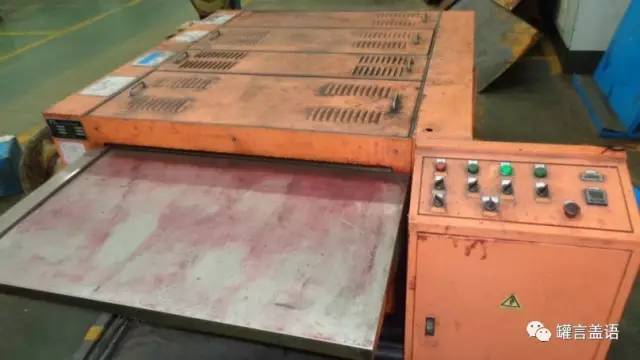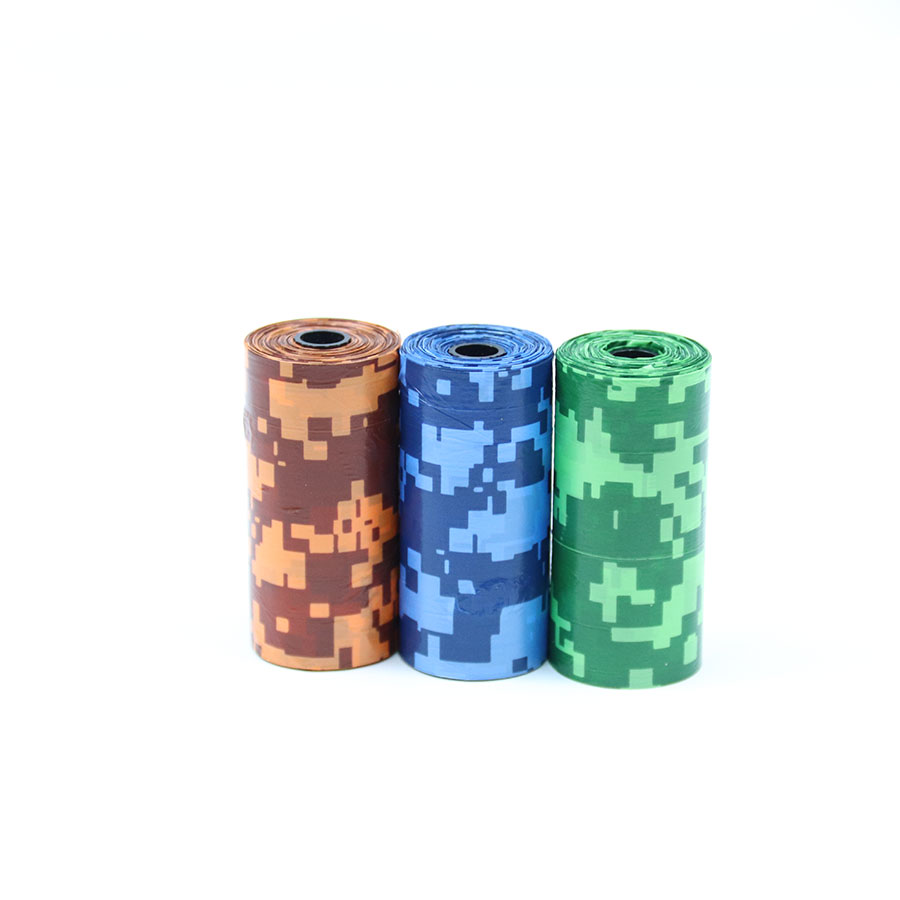Discussion on the main sources and control measures of production cost in printing iron workshop
Text / Mr. Blacksmith
As we all know, "profit = price - cost", for a factory's printing iron workshop, efforts to reduce production costs and thus improve profitability has always been the goal.
Six sources of production costs in the printing iron workshop
Since it is necessary to reduce production costs, it is first necessary to clarify where the costs will occur. In general, the manufacturing cost of the printing iron workshop is mainly derived from the following six aspects.
Raw materials mainly refer to substrates such as iron and aluminum.
Accessories such as: paint, solvent, ink; rubber roller, plate, blanket, etc.
Water and electricity include oven fuel and so on.
Equipment Maintenance Includes repairs, spare parts inventory, and more.
Equipment depreciation involves equipment utilization and work efficiency.
Labor is the wages, insurance, benefits, etc. of workers.
Five aspects to reduce production costs
After clarifying the main source of production costs in the printing iron workshop, we will then analyze which parts have a large cost control space, so that the right medicine can be effectively controlled. Specifically, it can be analyzed and improved from the following five aspects.
People do their best, that is, "everyone has something to do, and everyone has something to do." The most serious waste in a company is often the waste of labor. Many ordinary workers or new employees are often unfamiliar with the equipment or unfamiliar with the craft. They often only do what the foreman says, if the foreman is not assigned, or one thing is completed. I will be idle and don't know what to do. Although the salary of ordinary workers is not high, in addition to reducing work efficiency, artificial waste will cause dissatisfaction among others and affect the enthusiasm of the overall team.
The improvement method is to train all the staff, produce corresponding job descriptions, job responsibilities and conduct corresponding job evaluation and performance appraisal. In this way, employees can become proactive and achieve "everyone has something to do and everything is done."
Maximizing equipment utilization and work efficiency In general, if the customers of the printing iron enterprise are relatively stable and the manuscripts are mixed, a monochrome machine, a two-color machine and a multi-color machine should be equipped to maximize equipment utilization. In this way, the equipment can be fully utilized according to the process requirements, and some manuscript processes can be optimized, or the same process can be used to reduce the number of changes.
In addition, in order to improve the efficiency of the equipment, it is also necessary to record the calibration data of the school vehicle data, the ink ratio, and the thickness of the film on the often printed manuscript, so that the time for changing the model and the school bus can be reduced.
Reducing fuel waste in the drying oven can take the following three improvements to reduce the waste of the drying furnace fuel.
First of all, when the equipment failure repair or re-booking and other downtime exceeds 30 minutes, it is necessary to turn off the furnace fire in time to reduce the waste of gas in the empty furnace. Or add some automatic devices, such as PLC, time relay and other automated equipment to determine the length of downtime and automatically turn off the fire, which can reduce gas waste, and avoid abnormalities caused by people neglecting to forget the ignition when restarting.
Secondly, for the drying oven with the closed type and the preheating function of the flower stand, the preheating of the flower stand can be improved as much as possible without affecting the manuscript. Since the heat of the preheating function of the printing iron oven is generally derived from the excess heat in the drying furnace, the waste of excess heat energy in the upper drying room is avoided, and the temperature of the drying room is improved by using the preheating function of the flower stand. Save fuel costs.
Third, it is necessary to regularly check and clean the agglomeration in the drying furnace. The drying furnace often agglomerates due to incomplete combustion, etc., which will not only cause ash and black spots on the coated iron, but also affect the drying. Dry effect and waste of fuel.
Optimizing the inventory of equipment components Many factories often encounter these problems: equipment failure, parts must be imported from abroad, or local suppliers temporarily do not have spare parts, resulting in long-term downtime of the production line. If you buy a lot of parts in advance and spare, it will not only increase the cost of inventory, but also cause rust and damage to parts if you do not use them for a long time. By following the following five principles, you can reduce the inventory of spare parts and avoid the trouble of equipment failure, and spare parts inventory, that is, optimize the inventory of spare parts.
First, parts that have little impact on production can reduce spare parts inventory and even zero inventory.
Second, spare parts that have a greater impact on production can also reduce inventory or even zero inventory if purchased.
Third, parts that have a large impact on production and are not easy to purchase and have a high failure rate can be shared if there are other partners in the vicinity. For example, some motors or reducer spare parts can be stocked according to different models. It can reduce the cost of parts inventory and can be used in emergency situations.
Fourth, if some spare parts can be replaced by domestic products, try not to import them. At present, the manufacturing capacity of domestic printing iron equipment has been greatly improved. Unlike a dozen years ago, many parts were imported from Japan and Germany.
Fifth, strengthen the management of parts inventory, establish a safety stock system, and regularly count.
Controlling the loss rate of raw materials (substrate) Ferritic (substrate) is the most important raw material for the printing iron workshop and the first cost. Controlling the use of bismuth iron is also equivalent to controlling the loss rate and the quality rate. The use of plain iron can be controlled from the following points.
First, the protective plates of the upper and lower layers of the ferrite are recycled. Generally, there are protective plates on the upper and lower layers of the plain iron. These protective plates are generally abnormal, and the abnormalities are also various. If the appearance has been deformed so that it cannot be printed, it is of course not available. However, if the appearance is only slightly flawed, and these defects can be masked by printing or coating, it can be applied to some less demanding manuscripts (such as miscellaneous cans).

Figure 1 Depending on the application area, the protective plates on the upper and lower layers of the iron can be recycled.
Because food cans and beverage cans are generally more demanding, some of them cannot be recognized by the naked eye, but they will affect the preservation effect of subsequent cans or cans. Therefore, it is recommended that food cans and beverage cans should not be recycled.
Second, the iron sheets that have been printed and damaged but not yet baked are used for cleaning. In fact, many printing iron workshops are doing this, but the cleaning methods are different - some are manual cleaning, while others are washed with a washing machine. Regardless of the use of the machine or manual recycling, it is necessary to make efforts to make the cost of cleaning lower than the cost of recycling iron. Therefore, if the quantity is not much, try to use labor, otherwise it is more cost-effective to use the machine.

Figure 2 The iron washing machine can clean the iron sheets that have been printed and damaged but not yet baked.
Third, periodically analyze the causes of wear and develop relevant preventive measures. Generally, the printing iron products need to carry out 3~5 printing processes, and each process needs to pass 6~7 equipments such as feeding table, conveying table, coating machine (printing machine), drying room, cooling area and iron collecting machine. During the transportation and stacking process, there is a possibility that the traffic jam or the conveyance may not cause iron loss at every place. Therefore, it is necessary to convene on-site personnel (if possible, once a day) to review and analyze the processes and parts with more losses, and to formulate corresponding countermeasures.
Conclusion
A factory must control the manufacturing cost. Simply speaking, it is nothing more than open source and throttling. If it can be managed and executed effectively, let people do their best and make the best use of it, then it can achieve both lower manufacturing costs and energy conservation. purpose.
Product details
Cleaning up after your pet is easy with the convenience and dependability of OUT! PetCare Pick-Up Bags.
LEAK-PROOF BAGS: The leak-proof design of OUT! PetCare poop bags allows for ease of mind while picking up dog poop. No worries about any unpleasant surprises leaking out of the bag.
STRONG, DURABLE SUPPORT: The dependable, strong design of OUT! PetCare poop bags means you never have to worry about the process of picking up poop at home or out and about.
FUN, NEW PATTERNS: The new colors and designs on the bags makes cleaning up after your dog easy and stylish while on a walk or even just in your backyard.
SIMPLE CLEANUP: The 9x12 size allows for plenty of room to clean up after your dog.
DOG BAG DISPENSER COMPATIBLE: These fashion dog poop bags fit all OUT! PetCare dispensers as well any dispenser that holds standard dog poop bag rolls.

Three-Dimensional Bags,Plastic Three-Dimensional Dog Poop Bags,Plastic Three-Dimensional Pet Waste Bags,Plastic Three-Dimensional Bags
Taizhou Jinchi Sanitary Product Co., Ltd , https://www.petwastebagtzjc.com
